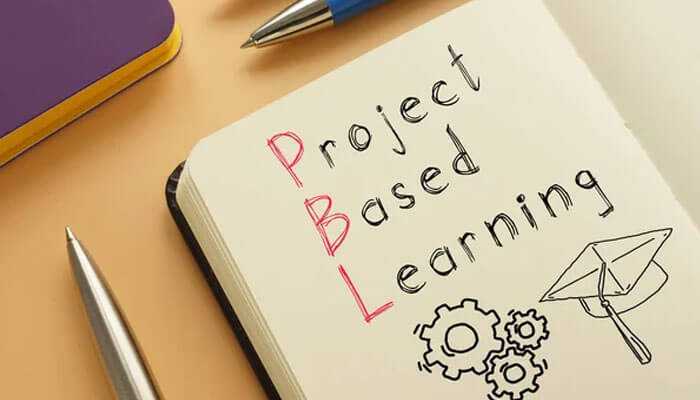The education sector is undergoing a profound transformation, propelled by technology and innovative pedagogical theories. Educators are increasingly exploring new teaching techniques that not only engage students but also enhance learning outcomes significantly. The shift from traditional lecture-based methods to more interactive and student-centered approaches marks a pivotal change in how education is imparted. This article delves into teaching techniques that are reshaping today’s classrooms, offering a glimpse into a more dynamic and effective learning environment.
1. Flipped Classrooms
The flipped classroom model stands out as a revolutionary approach, reversing the typical learning environment. In this approach, students first encounter the course material outside the classroom, typically through digital mediums such as online readings or instructional videos. The students deepen their understanding of the topics during the actual classroom sessions. They do this through interactive discussions, engaging in problem-solving exercises, and participating in practical, hands-on projects. This technique turns the traditional classroom on its head, moving away from passive listening to active learning. Students come to class prepared, enabling them to engage more deeply with the material and apply concepts in a collaborative setting.
2. Personalized Learning Paths
Personalized learning tailors the educational experience to individual student needs, abilities, and interests. This approach utilizes technology to assess and adapt to each student’s learning pace and style. By offering personalized learning paths, educators can ensure that each student receives the attention and resources they need to succeed. Students choose and discover learning methods that work best for them, fostering a more inclusive and effective education setting where the curriculum is not restrictive.
Educators can equip themselves with the skills needed to design and implement personalized learning paths through advanced programs, such as doing a master’s in curriculum and instruction online. By doing it online, they can gain advanced skills without neglecting their ongoing career.
3. Collaborative Learning Environments
Moving beyond the confines of individual learning, collaborative learning environments emphasize group activities and peer-to-peer education. This approach encourages students to work together to solve problems, complete projects, and discuss concepts. It enhances knowledge retention and develops essential social skills like communication, teamwork, and empathy. In these environments, the role of the teacher transforms from a sole knowledge provider to a facilitator of learning, guiding students in their collaborative efforts.
4. Project-Based Learning
Project-based learning (PBL) is a dynamic classroom approach where students actively explore real-world challenges and problems. PBL immerses students in hands-on projects that promote critical thinking, creativity, and problem-solving skills. Unlike traditional teaching methods, it emphasizes practical application and allows students to engage with the subject matter in a meaningful way. This approach prepares students for real-life challenges, equipping them with the skills to navigate and solve complex problems.
5. Integrating Virtual and Augmented Reality
Virtual and Augmented Reality (VR and AR) are reshaping the educational landscape by providing immersive learning experiences. These technologies create interactive environments that simulate real-world scenarios or create new, imaginative settings for exploration. From dissecting virtual frogs in biology class to exploring ancient civilizations in history lessons, VR and AR make learning more engaging and memorable.
6. Mindfulness and Emotional Intelligence in Curriculum
Mindfulness and emotional intelligence are increasingly recognized as vital components of a comprehensive education. Integrating these aspects into the curriculum enhances students’ self-awareness, empathy, and stress management skills. Mindfulness exercises, such as meditation and reflective practices, help students cultivate concentration and a calm mindset, leading to improved academic performance. Emotional intelligence training enables students to better understand and manage their emotions, fostering a more empathetic and cooperative classroom environment. These skills are essential for personal well-being and success in both academic and future professional endeavors.
7. Utilizing Social Media as an Educational Tool
In educational settings, students can use social media to improve their learning experience instead of having it distract them. Educators are looking for innovative ways to incorporate social media platforms into their teaching, enhancing student engagement and learning. This approach encourages students to research, collaborate, and share information in a format they are familiar with and comfortable with. Additionally, it teaches digital literacy and responsible online behavior, skills crucial in today’s digital world. However, it’s important to maintain a balance and ensure that social media use in the classroom is focused and purposeful.
8. Data-Driven Instructions
Data-driven instruction is a method where educators use data gathered from various sources to inform their teaching strategies and curriculum decisions. This approach allows for a more objective analysis of student performance, helping teachers identify areas where students struggle and succeed. Armed with this information, educators can tailor their teaching techniques to meet the needs of their students better, leading to improved educational outcomes. The use of data in the classroom also helps in setting realistic and achievable goals for students; consequently, it ensures continuous progress and development
Conclusion
As we navigate through an era of rapid technological advancements and shifting educational paradigms, the importance of adopting innovative teaching techniques becomes increasingly clear. Each method discussed represents a step towards a more engaging, effective, and inclusive educational system. Educators who adopt these teaching techniques are helping improve their students’ learning experiences and preparing them for the challenges and opportunities of the future.



